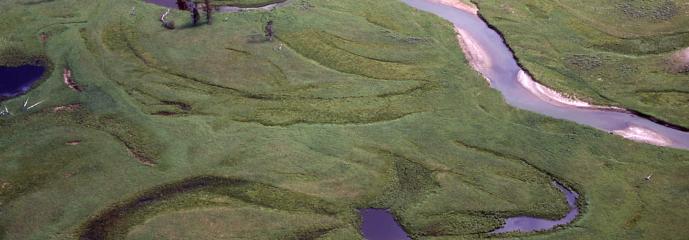Project Overview

Note: The original project timeframe was 2011-2016. That timeframe was extended to 2011-2017 due to an unfunded year to address identified issues. A No Cost Extension further extended the project to August 31, 2018.
This project focused on climate and ecosystem linkages from scales of microbes to landscapes and helped to create the statewide Montana Institute on Ecosystems.
Project Overview: MT EPSCoR is committed to addressing one of the critical scientific and social issues facing the nation: the effects of climate change in sustaining healthy ecosystems and economic growth. By bridging the worlds of microbiology, ecology, and climatology, the MT EPSCoR program seeks to understand the dynamics and linkages of ecosystem processes that govern how an ecosystem responds to climate change. Through this interdisciplinary and ecosystem-centric approach, the program will provide an innovative model that is both regionally relevant and nationally significant, while capitalizing on the unique resources and scientific strengths found in Montana.
SCIENCE OBJECTIVE: Ecosystem-climate linkages: Biomes to microbes -- What are the physical and biotic processes that govern ecosystem structure and function, and how will these ecosystem interactions be influenced by climate change?
Focus 1: Examining feedbacks between microbial metabolism and ecosystem processes
- Measure microbial contributions in soil and water to C/ N cycling and transport
- Determine temporal variability in microbial contributions to soil and water C/N cycling and transport over three to five years
- Measure microbial response under natural disturbance (e.g. drought, fire, insect infestation, flood and imposed disturbance through experimental manipulations).
- Examine the flux and transformation of C/N through the system in three dimensions and in relation to microbial processing of organic C/N.
Focus 2: Linking changes in landscape pattern to ecosystem process
- Understand the importance of ecological legacies on ecosystem processes, as measured by changes in ecosystem structure and composition.
- Create scenarios of past, present, and future landscape-level climate change by improving current down-scaled GCM and regional climate model output.
- Link field and modeling approaches to fill gaps in atmospheric-terrestrial-aquatic interfaces and spatial representations of C, N, and water cycling within montane watersheds.
- Refine and develop process models for comparison of aquatic-terrestrial linkages and vegetation climate interactions.
Focus 3: Understanding impacts of climate-change through ecosystemmodeling and vulnerability
- Integrate the novel microbial modeling algorithms into the ecosystem models developed above to simulate the interactive effects of climate, vegetation, land-use and disturbance on ecosystem structure and function, from microbial to landscape scale.
- Assess ecosystem vulnerability focusing on the Great Northern Landscape Conservation Cooperative (GNLCC), which encompasses a wide range of federal and state-managed lands in Montana and the interior Northwest, including many underserved communities.
Integration: Projects that support and link the three Focus Areas.
-
This project component is a year 2 modification from the original science objectives.
Social-Ecological Systems Initiative: Integration of social-ecological systems (aka coupled natural and human systems) inquiry in the total portfolio of research capacity in the IoE to better understand Montana's ecosystems undergoing rapid change.
-
This project component is a year 2 modification from the original science objectives.